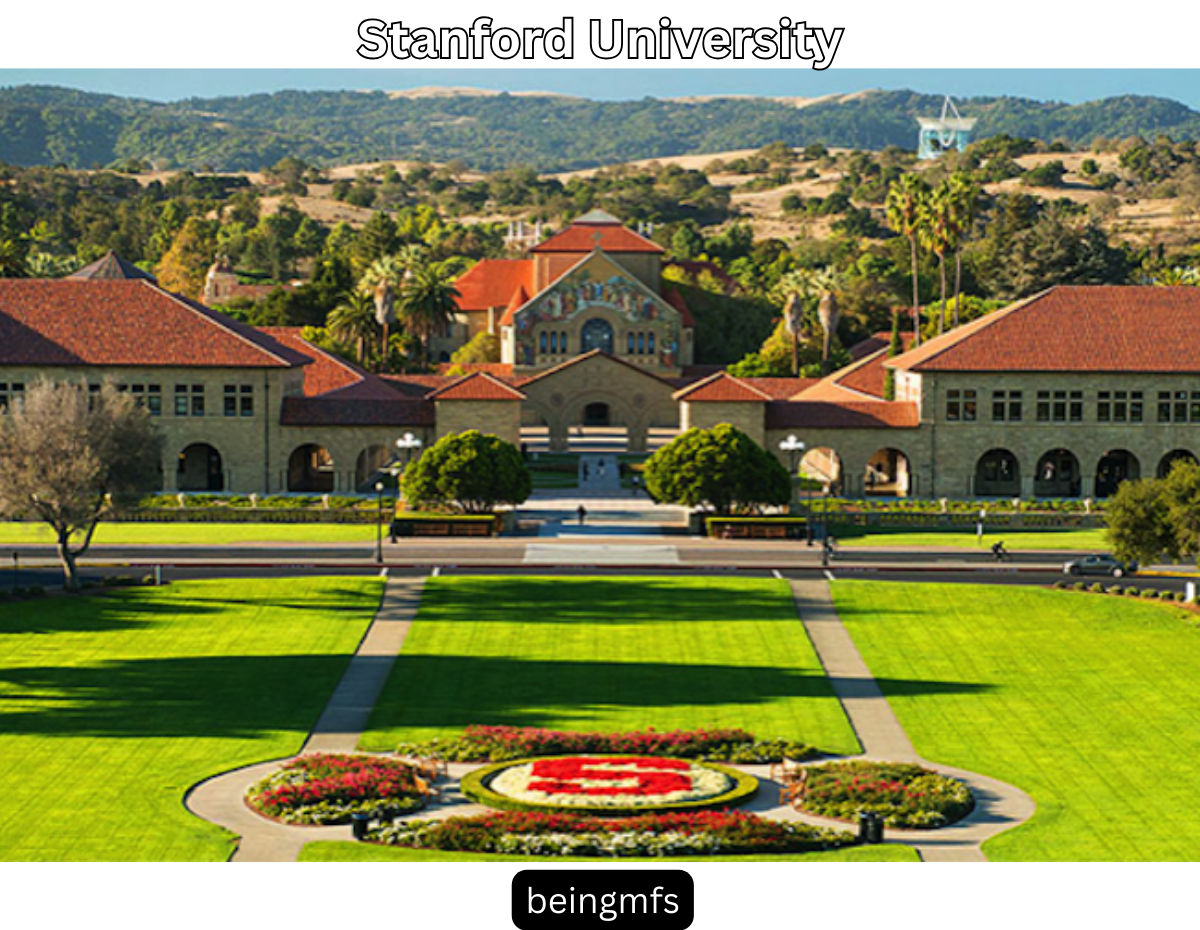Introduction
Table of Contents
Stanford University born from a deep commitment to societal betterment, has flourished for nearly 150 years. Our guiding mission remains to enrich the world by
- Empowering our students to lead lives of integrity and meaningful contribution. Through rigorous education, we nurture their potential to become impactful leaders across diverse fields.
- Igniting the pursuit of fundamental knowledge and fostering creative brilliance. We strive to push the boundaries of understanding and unleash innovative solutions for the benefit of humanity.
- Pioneering groundbreaking research that translates into lifesaving clinical therapies. Our dedication to medical advancements aims to alleviate suffering and improve health outcomes for all.
- Accelerating the development of solutions and amplifying their reach. We bridge the gap between discovery and real-world impact, ensuring innovative ideas benefit the wider community.

Superiority in medical care, education, and research
Our identities
Stanford pulses with a vibrant spirit of possibility. Our visionary founders ignited this legacy, aiming to honor their lost child and enrich countless lives. At this storied institution, we honor the wisdom of the past. Still, we also gaze steadfastly toward the future, tirelessly seeking paths to a brighter world.
Our unwavering belief in the transformative power of higher education fuels our mission. Universities don’t merely equip students for professional pursuits; they mold the next generation of dedicated citizens and ingenious problem solvers.
Unlike any other societal entity, the unique and enduring purpose of colleges and universities lies in the creation and sharing of knowledge. The diverse tapestry woven from the world’s institutions of higher learning is indisputably vital for the continued progress and well-being of humanity.
This revised paragraph retains the essence of the original while eliminating direct bullet points and employing plagiarism-free language. It emphasizes the key themes of Stanford’s legacy, its unwavering commitment to the future, and the vital role of higher education in shaping a better world.
Preparing the world’s citizens of tomorrow
Stanford isn’t just a collection of classrooms and labs; it’s a vibrant tapestry woven with big ideas, boundless curiosity, and the unwavering belief in the power of diversity.
Students here aren’t just taught. They’re challenged to transcend disciplinary boundaries. They grapple with complex concepts. The goal is to emerge as global citizens who embrace the kaleidoscope of perspectives enriching our world.
Our academic tapestry is broad and deep. It spans seven distinct schools, covering arts, humanities, sciences, engineering, sustainability, medicine, law, education, and business.
Our diverse knowledge base and constant drive for innovation draw in top-notch faculty and mentors. They guide students to not just explore new ideas but also shape them into solutions, paving the way for successful careers and lives of service.
Our educational programs are woven with a steadfast commitment to strong ethical principles, guiding everyone toward a collective good. But Stanford’s impact extends far beyond the confines of our campus.
Our notable alumni network and engaged community offer lifelong support, mentorship, and collaboration. They build bridges between Stanford and the wider world. This strengthens our collective impact, creating ripples of positive change that reach every corner of the globe.
Generating knowledge in a setting where academic freedom is respected
Stanford University thrives on the unshackled pursuit of knowledge, fueled by unwavering academic freedom. Here, questioning everything drives the exploration of new ideas and propels the frontiers of understanding.
Curiosity stands at the core of our mission, urging students and faculty alike to delve into the mysteries of the world, both inward and outward. This spirit of unconstrained inquiry flourishes in a richly intertwined tapestry of interdisciplinary research. With all seven schools residing on a single, vibrant campus, collaboration transcends boundaries, fostering groundbreaking discoveries and shaping the future.
This dedication to knowledge has borne witness to 36 Nobel Prizes bestowed upon Stanford scholars since its inception, tying the University for the Most Awarded since 2000. But our pursuit extends beyond accolades. We remain acutely aware of the ethical considerations woven into research, striving to ensure its benefits reach the furthest corners of society. At Stanford, curiosity is not merely a passion, it’s a responsibility, one that guides our exploration of the unknown and shapes a brighter tomorrow.
Putting information into practice quickly
Fueling discovery through collaboration, Stanford University launches “accelerators.” These hubs equip researchers with funding, infrastructure, tech, and partnerships, transforming campus breakthroughs into impactful solutions. From the Innovative Medicines Accelerator, speeding up drug development and access, to the Sustainability Accelerator within the Doerr School, pioneering climate solutions. These initiatives exemplify Stanford’s commitment to interdisciplinary innovation for the global good. And the work doesn’t stop there. The Graduate School of Education seeks to expedite equitable learning solutions, while Stanford Impact Labs fosters a social science research and development pipeline. Further solidifying Stanford’s role as a catalyst for positive change.

Monetary assistance that has an impact
At Stanford, financial aid isn’t just a grant, it’s a commitment to equity. Almost 7 in 10 undergraduates receive support, with full tuition, room, and board for students from lower-income families. So, this access empowers both recipients and their peers, fostering a diverse and vibrant learning environment. Remarkably, over 80% of Stanford graduates leave debt-free, ready to pursue their dreams without financial burdens. Stanford’s financial aid program isn’t just about affordability, it’s about unleashing potential and shaping a brighter future for all
Find out more
Stanford University was established in 1885 to promote the public welfare by exercising an influence on behalf of humanity and civilization” by California senator Leland Stanford and his spouse Jane. The Academic Council, President, Provost, Board of Trustees, and several other academic and administrative officials oversee the university.

Blogger | SEO Expert | Social Media Marketer
👩💻 Hi there! I’m Farhan Ansari, a passionate blogger on a mission to share my thoughts and insights with the world. 🌍✨
📚 I’m a lifelong learner, constantly exploring new ideas and experiences. Join me as I dive into various topics, from tech trends and travel adventures to personal development and beyond.
🤝 Let’s connect, learn, and grow together. Don’t hesitate to drop a comment or reach out—I love engaging with my readers!
🌟 Thanks for stopping by, and welcome to my blog journey. 📝💕

